DOES A CHIPPED DIAMOND MATTER?
WHY A CHIP IN A DIAMOND MAY MATTER TO YOU AND YOUR POCKETBOOK!
This post contains affiliate links. If you use these links to buy something I may earn a commission. Thanks! As an Amazon Associate I also earn from qualifying purchases.
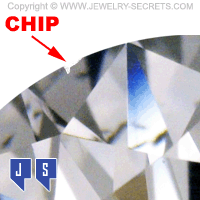
Diamonds chip. Yes they do.
It happens to many people, and it’s usually just caused by normal wear and tear. Ever hit your diamond on the edge of the counter and wince? It happens. Usually it’s something dumb like a filing cabinet…
The diamond often chips around the outer edge of the stone, called the girdle, where the diamond is the thinnest and weakest. And if you hit the diamond in just the right spot, at just the right angle, you can chip the stone.
But the real question is…
Does having a chip in your diamond really matter?
Let’s dive in…
YES, YES IT DOES!
In many ways:
The diamond can keep chipping:
Once chipped, that spot is even weaker than before (like a crack in a windshield). So if you hit that same spot again, it will probably do worse damage to the stone, maybe even shattering it.
Chips can change the value of your diamond:
A chip is part of grading clarity. Chips are flaws and imperfections, and will alter how a diamond is graded. It can change your highly rated diamond, to a much much lower clarity grade, which also depreciates the entire value of the stone or ring. It could make your clarity go from VS1, all the way down to I1 or worse. That’s a big difference and could knock thousands off the value.
Chipped diamonds need to be reappraised:
To fully know how much a chip alters your value, you’ll need to get your diamond reappraised (assuming it had an original appraisal to begin with). That way, the true clarity grade and new value will be assessed. Sometimes, if the chip is very tiny it may not even change the grade of the stone. You could get lucky! But have a certified diamontologist, or gemologist, reappraise your diamond so you can update your insurance on the item, as well as obtain a new resell value. Documenting that chip allows everyone to know that the value is not misrepresented or much higher than it should be.
You can trade in a diamond that’s chipped:
Most people don’t know this, but you can still use your diamond as a trade-in. Most jewelers will accept them. Just note that they will offer way less for that diamond, then if it weren’t chipped.
Chips can be removed from diamonds:
Depending on how big, or how deep the chip is, you can have your diamond recut to remove that chip. Diamond cutters (most are in New York) can reshape the stone, recut the facets, and send you your diamond back (all at a fee, of course). How much carat weight is lost in the process, depends on the actual damage. If it’s a tiny chip, you may only lose a couple of points. But if the chip is deep or large, they may have to recut the entire stone, making it smaller, and it could take the weight of the diamond down 20% or more. It all depends on how bad it is, and what they will have to do to preserve the integrity of the stone. The cost of doing this, is usually why jewelers offer a lower price for chipped diamonds. They absorb this recutting cost.
Chips can be covered up:
This is a big point. If you have a tiny chip on the outer edge of the diamond, often you can have a jeweler rotate the stone, so the chip falls underneath a prong to hide it. This is tricky and a very delicate job to do, for the jeweler could put too much pressure on the prong, and chip and crack the stone more. But, if they can do it, and do it successfully, you won’t see the chip anymore, and covering it, protects it, and may keep it from chipping further.
BUT… This is a tough point to make, because since you can hide a chip underneath a prong… That also means, that if you buy a ring from a jewelry store, they could be hiding a chip themselves, and you may never know it. See what I mean? A good jeweler will probably do this to try to protect the stone from more damage. Many may say this is deceiving and they are hiding the truth. But that’s what certification is for. If the diamond is certified, it will tell you if the diamond has a chip in it. It will show it on the diamond plot (if the laminated paperwork has one). So you will still know it’s chipped, you just won’t see it.
Word of advise:
The best way to buy a diamond engagement ring, is to buy the diamond loose first. That way you can inspect the diamond, from all sides and angles to see the flaws, imperfections, and chips. If any. Then you can have it mounted in the setting of your choice.
Beware of estate jewelry:
Estate jewelry, are usually people’s trade-ins, or items that people have sold. Like I said previously, worn items can get chips, and often do. If you look at any antique or vintage diamond merchandise, you’ll often be able to see and feel chips around the outer edge of the diamond. These could also be tiny hairline chips, called a bearded girdle. Most people that trade-in their rings, or sell them on eBay, don’t update their appraisals, and the certification (which could have been done in 1984) won’t reflect any new damage, won’t show the new clarity grade, or the new value of the ring. Beware of this. Also note, that, as stated above, some chips can be hidden under prongs or bezels or the mounting, making them invisible, even under a 10x loupe. So you could be buying a chipped diamond and never know it. Proceed with caution.
Keep in mind, that people who have covered up a chip, may trade-in their rings with a jewelry store. They probably won’t mention this to the jeweler at the time, and the jeweler won’t remove the stone to double check this fact either. That’s why buying estate, pre-owned, or trade-ins is risky. You just never know.
Chips are a natural part of wearing diamonds
The thinner the girdle is, the easier it is to chip that stone. The thickness of the girdle will also be listed on any certification papers. I usually recommend a Medium, or Thin girdle (the thinnest are Extremely Thin, Very Thin, or even NONE).
Also, having 6 prongs on your diamond versus 4 prongs, will protect the stone’s edge more. But 6 prongs also look gaudier and covers more of the diamond. It’s a toss up.
So when it comes to chips and cautions, I recommend this:
Insure your diamond:
If you get your diamond insured, insurance often covers the cost of replacing a chipped diamond (check with your agent). That way, if you do chip your stone, you can have it replaced, same quality, just pay your deductible. It may be wise to check this out beforehand, before you actually need it.
Lastly…
Chips don’t necessarily mean a diamond is bad:
This is an eye-opener. Chips are considered “blemishes“. Meaning, they are external imperfections that reside on the outside on the diamonds surface (not internal). And almost ALL clarity grades can have blemishes. Literally every single clarity grade there is, even an “IF” clarity, Internally Flawless diamond, can have a chip. That’s 10 out of the 11 clarity grades. Every grade there is, except for the very best in the world: Flawless (F). Flawless is the ONLY clarity grade that cannot have a chip, and remain a truly flawless diamond. But all the other grades can have a chip, and can still be graded as an SI, VS, VVS, or IF stone.
So chips can be harmless, or they could really drop the value of your diamond. It’s always wise to inspect the stone before you purchase it (and buy loose diamonds if you can). Make sure it’s certified. And I would always advise taking your diamond into a jewelry store at least twice a year to get it cleaned and inspected. Because in life, you just never know when tragedy arrives.
Cheers! :)


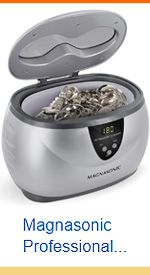

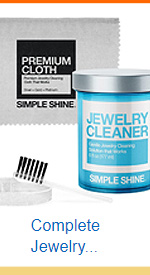
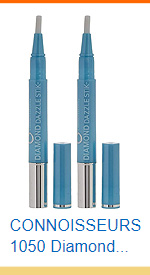
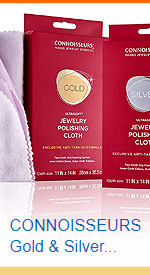
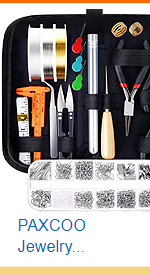
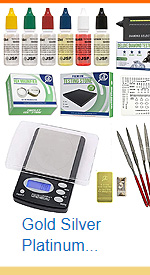
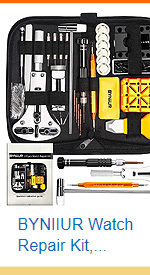
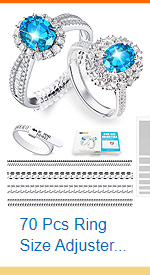
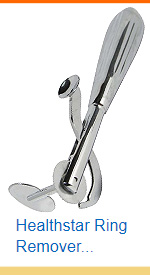
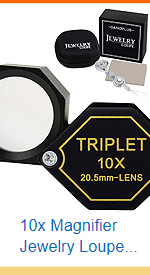
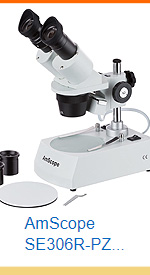




Great coverage, as usual. BUT – and there is always one of those, right? – but, I must take exception to one comment made here. And that is assuming that a six prong mount over a four prong mount is somehow “gaudier” than that four prong setting. I disagree wholeheartedly.
I know that “beauty is in the eye of the beholder,” and so forth, but six prongs, when done well, can make a round diamond look MORE round , compared to four prongs, which can make a round diamond look very ⬛ square. You’re only adding two prongs, not ten, and as you said, it is more secure than four prongs. After all, if you have a four prong setting, and you “crash” a prong and twist or break it, you only have three left to protect the stone. But, with six prongs, damaging one prong leaves you five more to keep your stone from falling out, and protecting the rest of the girdle, until you can get it repaired.
I have observed this effect all my life, and have had many people agree with me. I had my mother’s 0.75ct brilliant cut white YAG solitaire in 14kt white gold, (which she gave to me when doling out her jewelry before she went into the nursing home) reset into a medium height six prong peg head with pointed prongs (on the same band – we just switched the head) after I observed this effect in her ring. It just didn’t look like a ring I would wear because of this “squared off” four prong effect. It actually made all the difference in the world in its appearance, and I rarely wear anything else. I have PLENTY of other choices, 90% in 6 prong mounts, the other 10% or so are 1940s and 1950s vintage bridal sets with “illusion” mounts, most of which are already four prong and all but one are already square. But this is the one that suits me best. I’ve had tons of complements on how pretty it is, and how it “sure doesn’t LOOK like a CZ!” It’s not of course, and I make sure to make that distinction. But since nobody knows what a YAG is anymore, I just tell them it’s not a CZ at all, and let them wonder!
Perhaps it’s my “geometric” mind set, that, among other things, lets me solve those flat geometric puzzles that require you to select the image you would get if you actually folded all the sides together and created a polyhedron of some kind. I just mentally “see” things in 3 dimensions, like parallel parking cars without problems, and driving very large vehicles by “seeing” with my mind’s eye, where all the corners are, when I’ve never even been in one before. I zapped all of those puzzles on the ASVABs I took my Senior year in high school. The recruiters took note!
Anyway, that’s my take on the bonuses of setting round stones in six prongs instead of four. I’ve used my loupes to examine my settings and stone girdles lots of times, and without having the old ones unset to be examined, I think we’re all OK. Since I don’t/can’t work anymore, or even leave the house much, the possibility of damaging my rings is pretty insignificant, so I don’t worry about them much. Not that I ever could work before when wearing any jewelry, except a pair of very small <3-4mm, very secure gold stud earrings from time to time, because Surgeryis not a good place for doing that! In fact, the "powers that be" frown on such things quite often, and make it part of the rules of the game!
Hello. Absolutely. 6 prongs are much safer, but I should have said, they CAN make it look gaudier. Especially with smaller diamonds. If you have a half carat or quarter carat, with 6 prongs, it could cover up much of the crown and overwhelm it. So the bigger the diamond the better when it comes to prong work. I have seen 4 prongs make a stone look square, but for some reason, it’s random. Maybe the mounting it’s in? Or how thick the prongs are? Some heads have squared off prongs with corners, that tend to make it look boxier. I’ve never had an issue with them, and in fact, I would still opt for a 4 prong myself… as long as it didn’t look square. :) -Richard